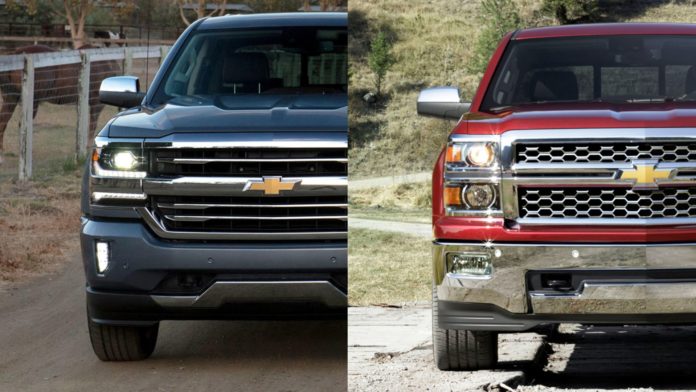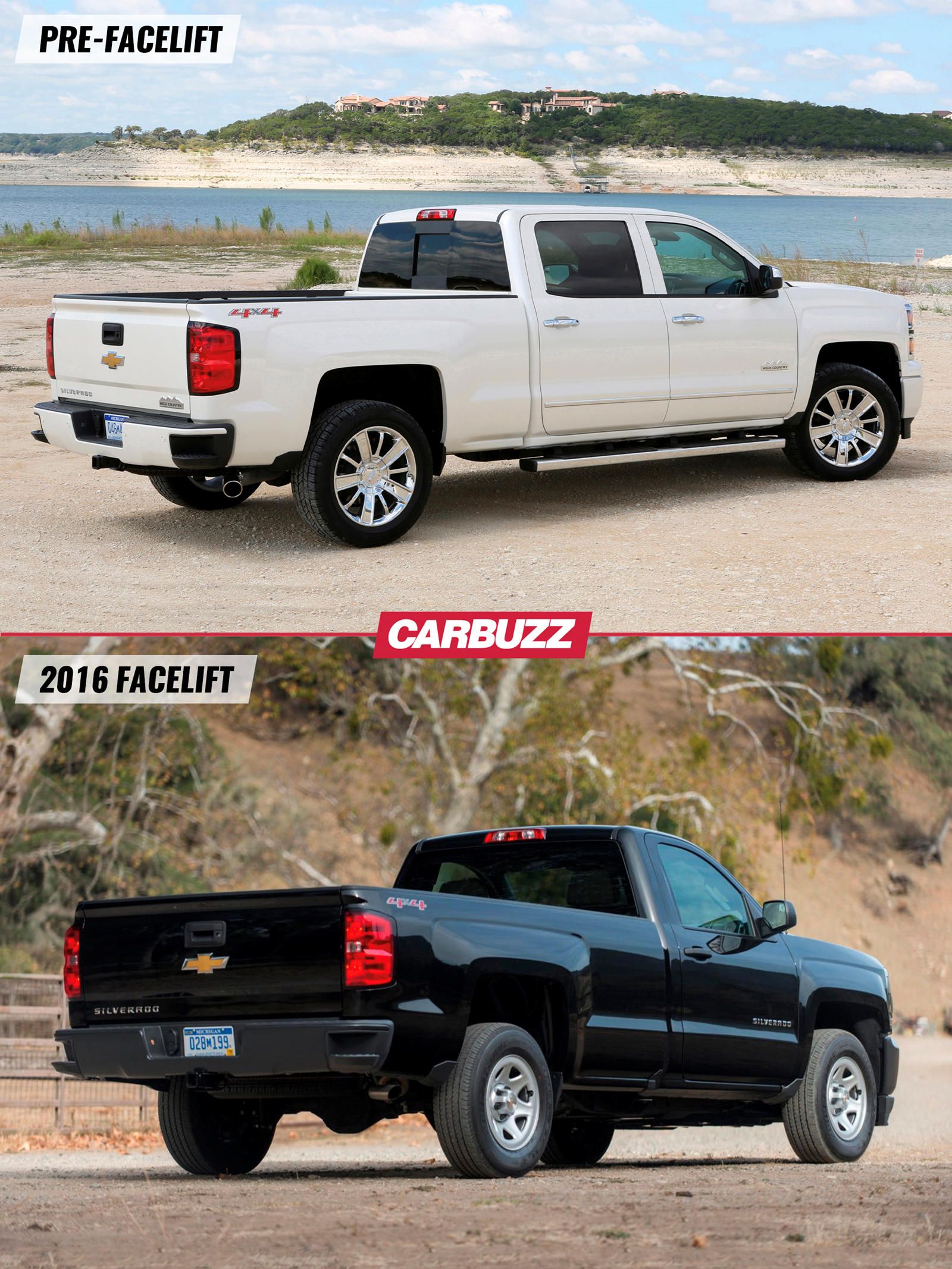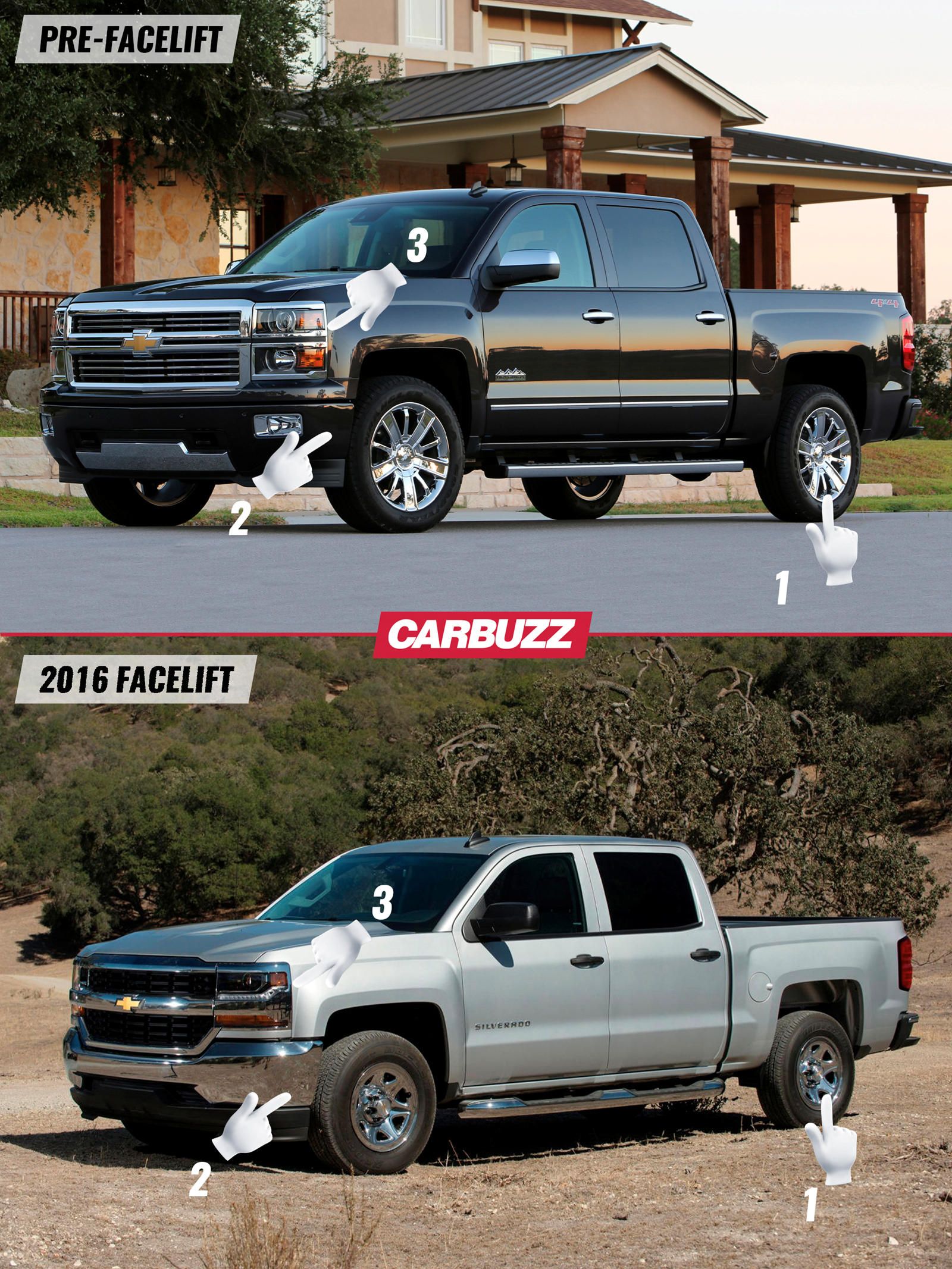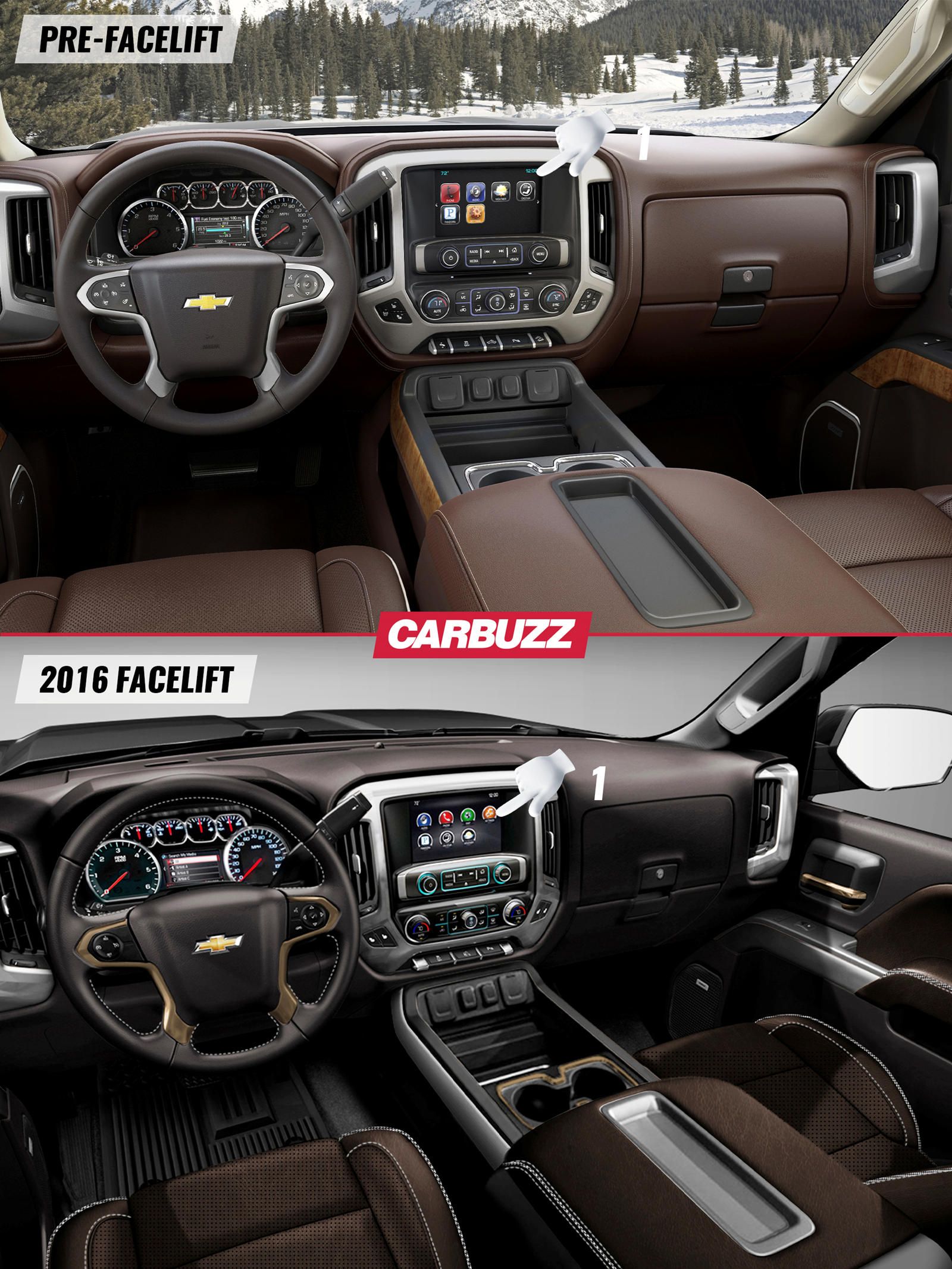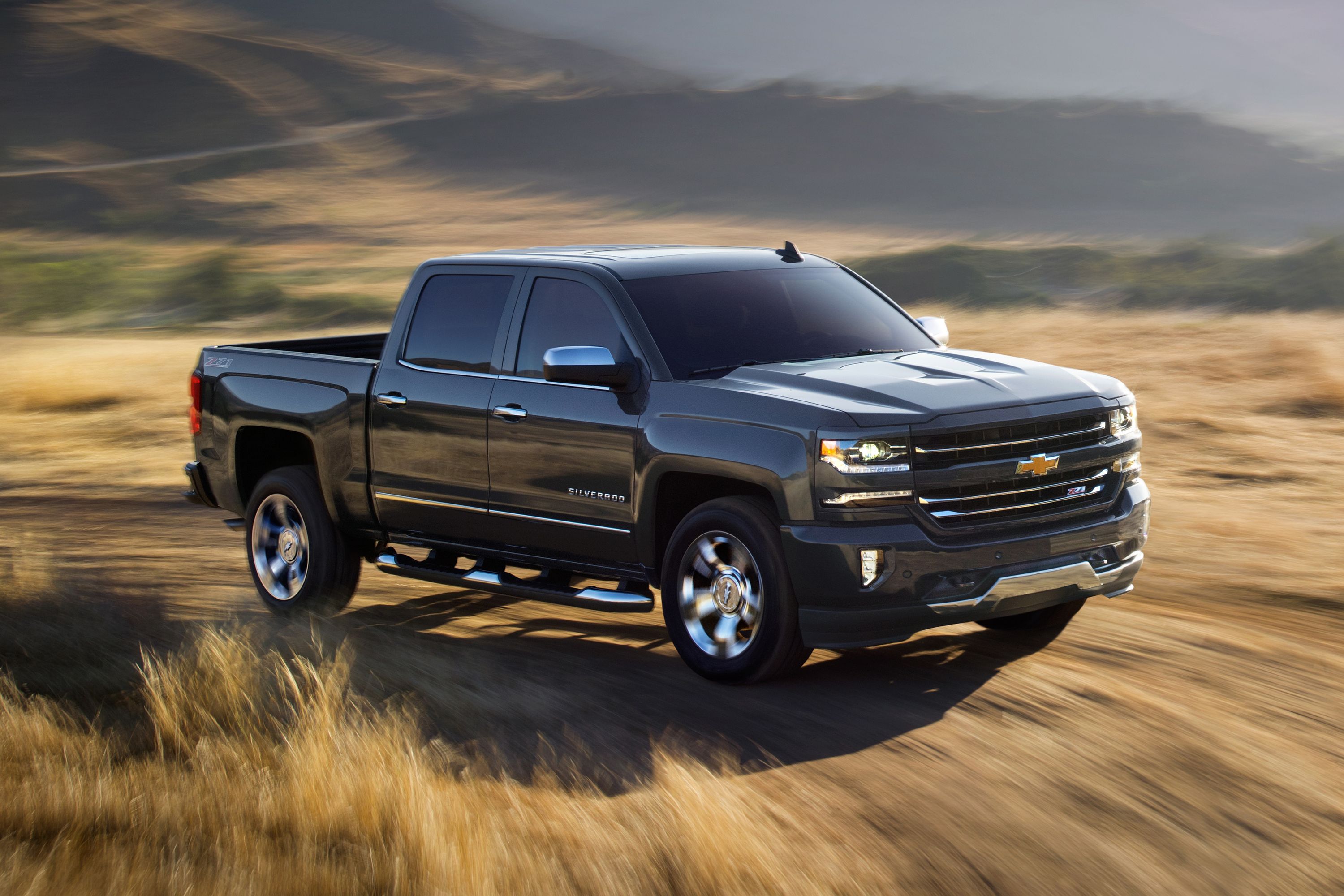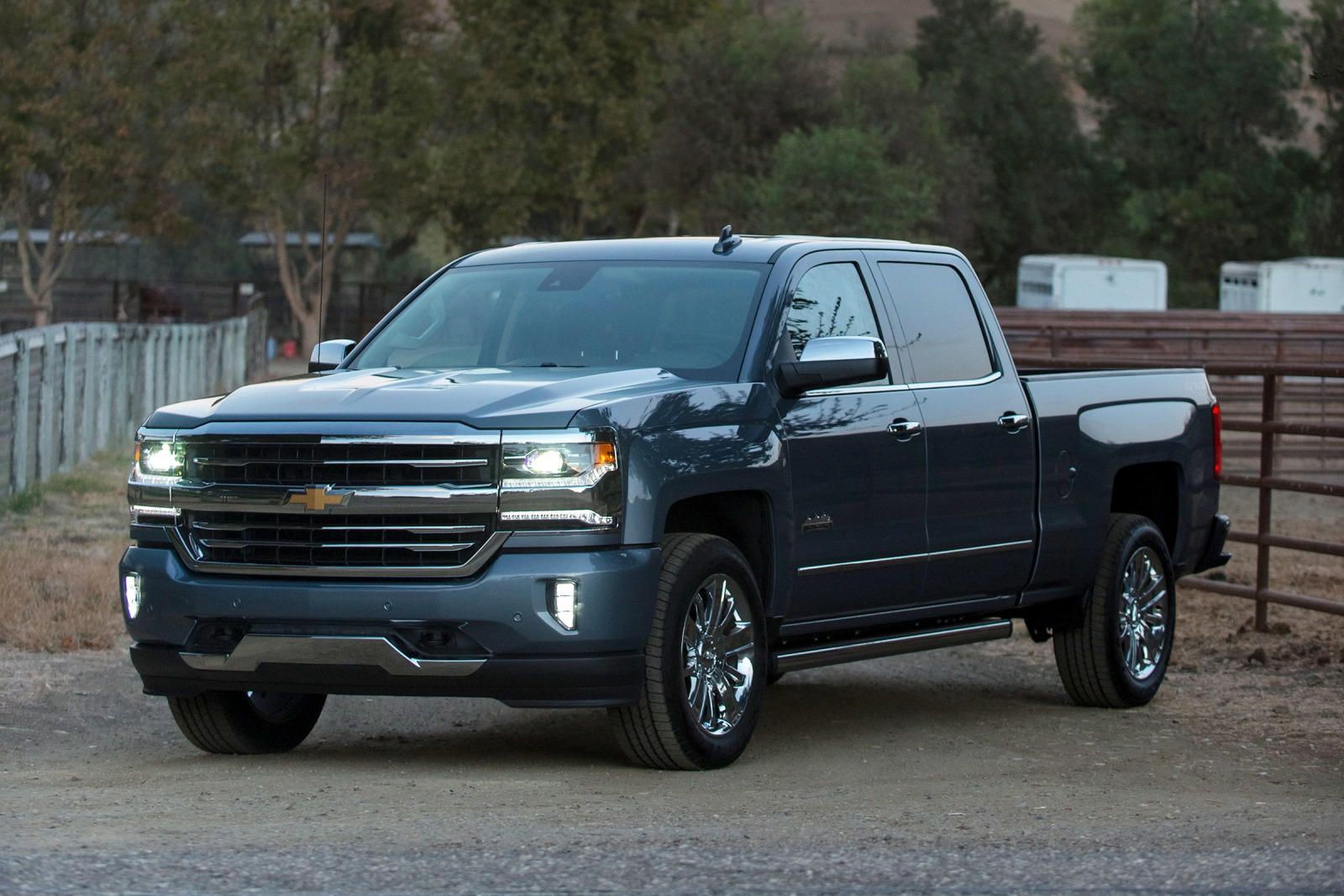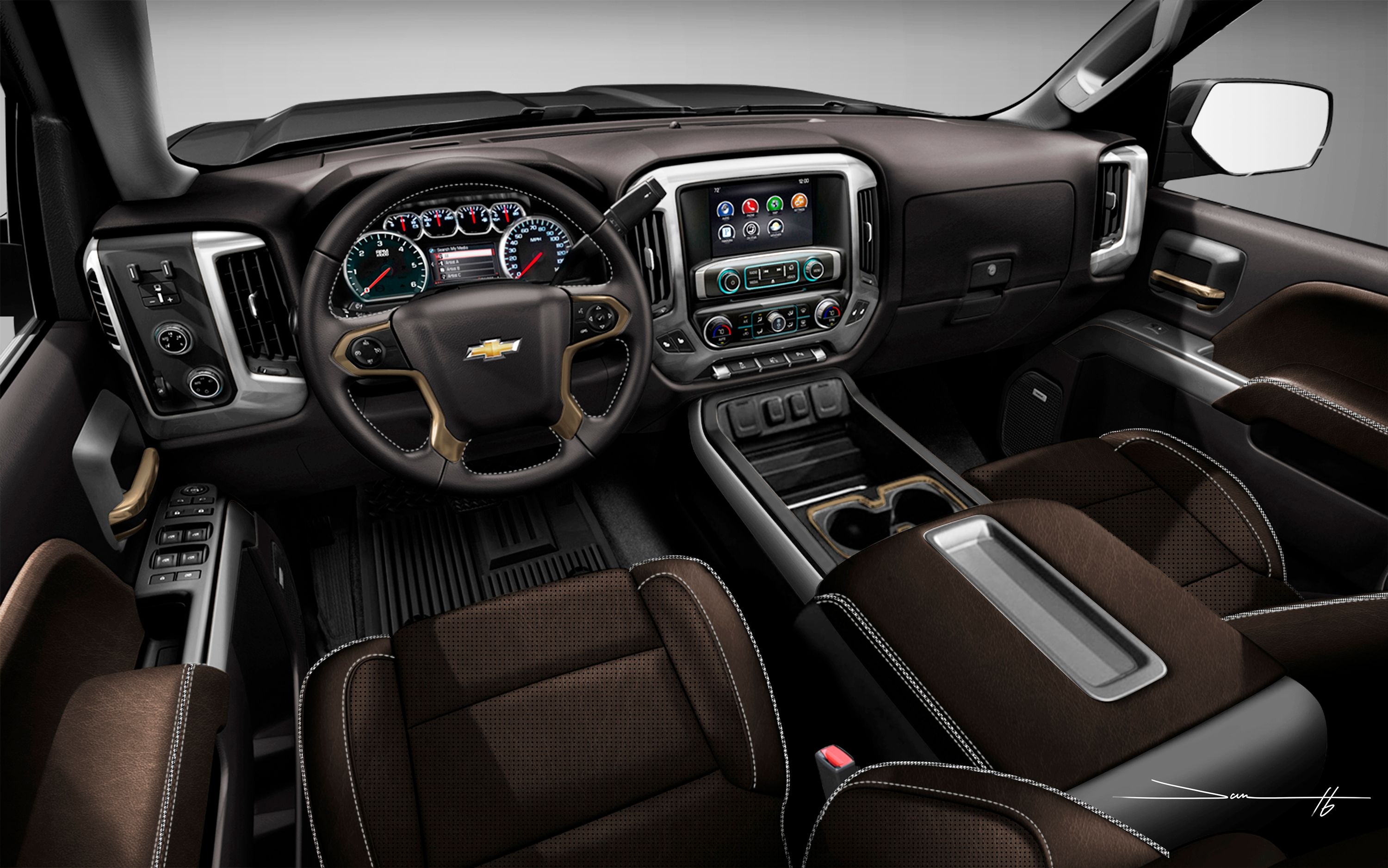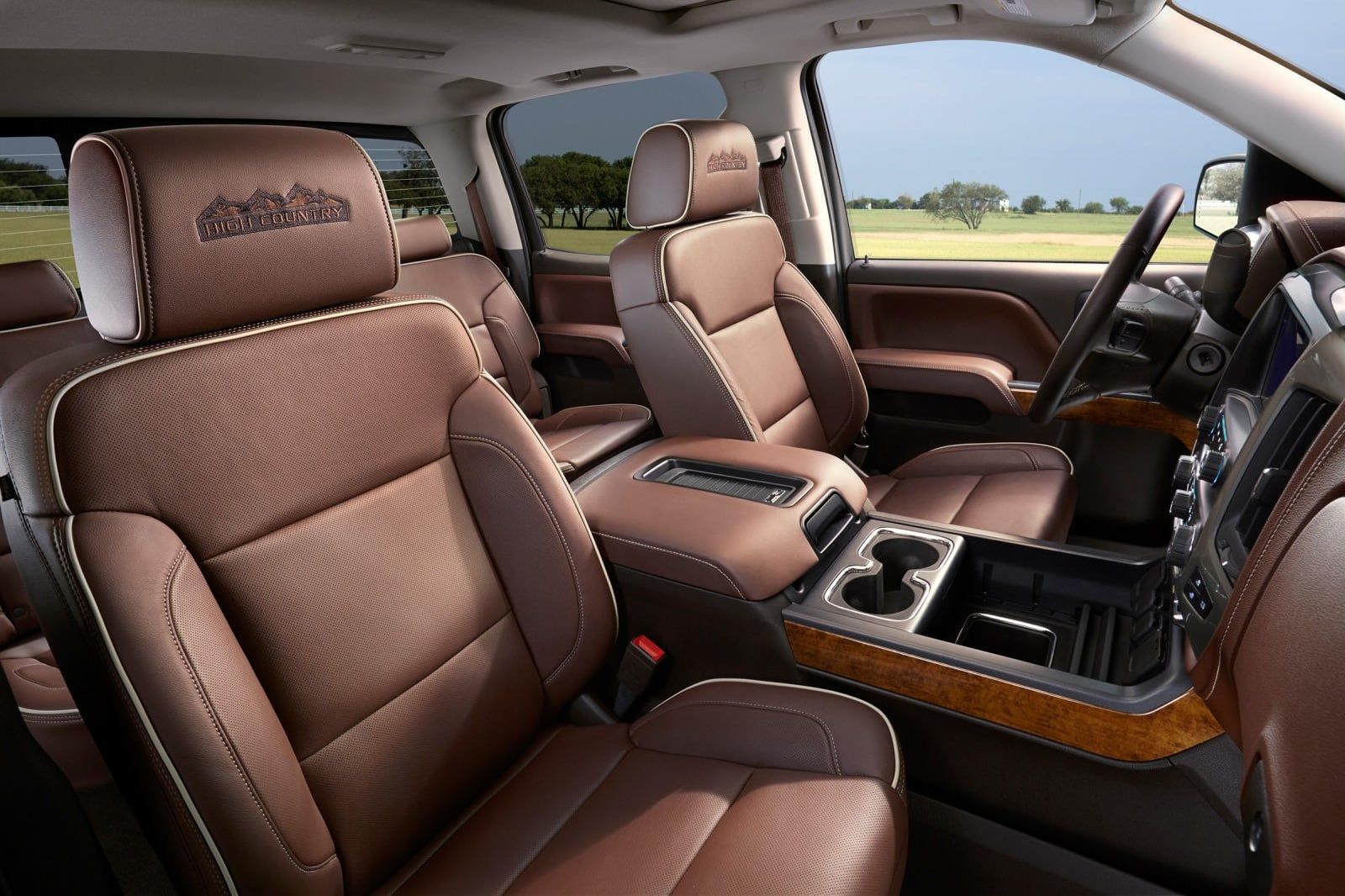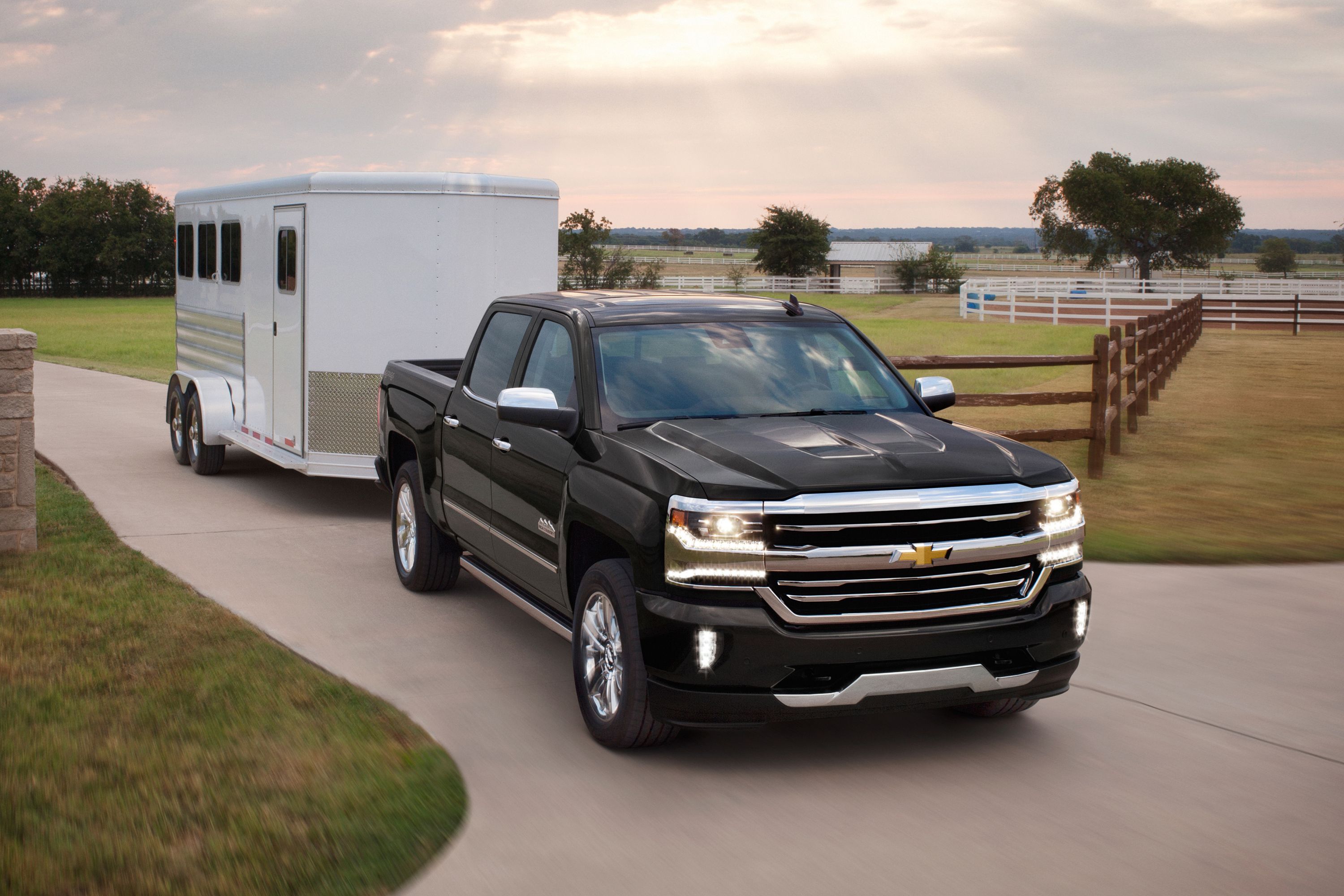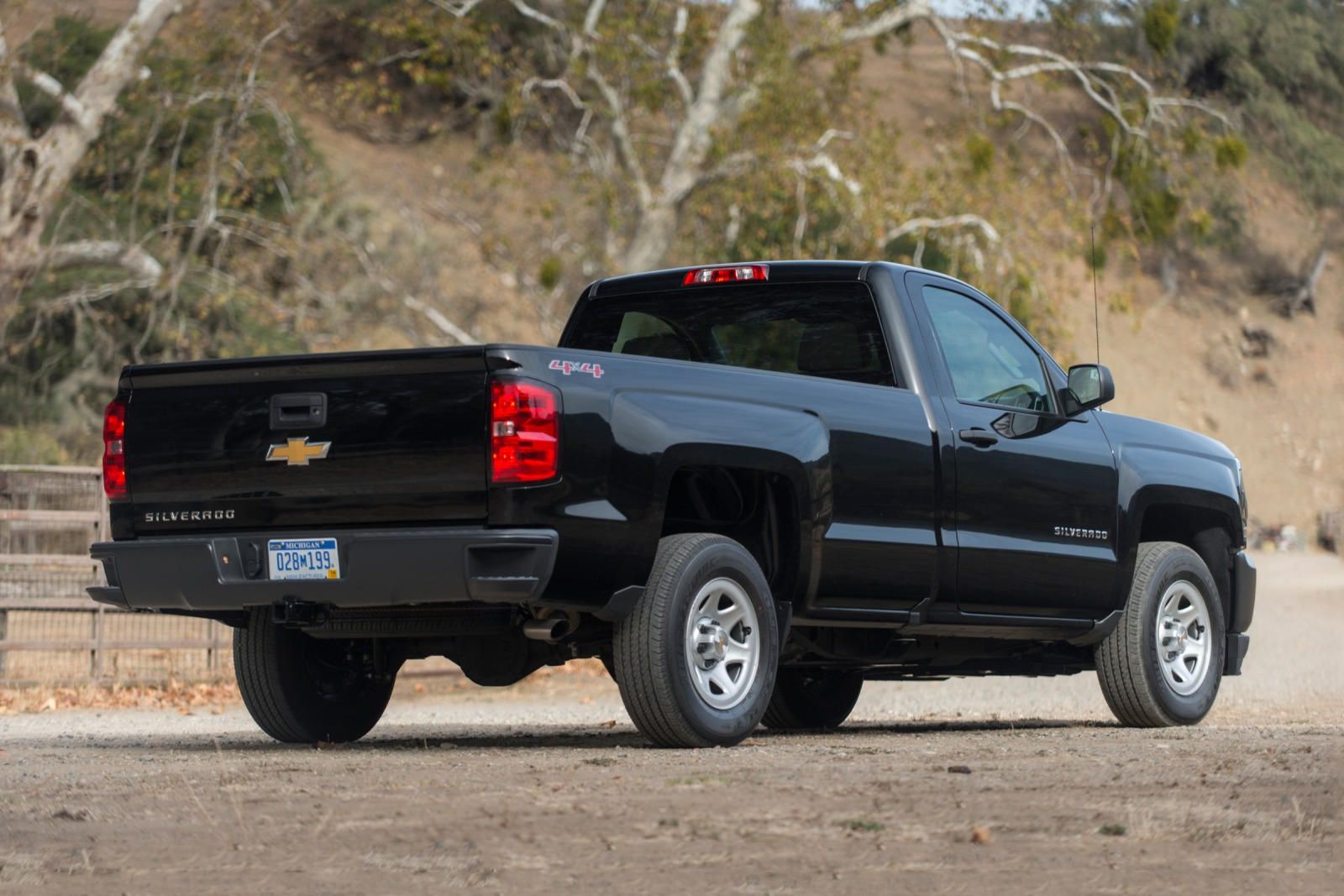3rd-Gen Chevrolet Silverado 1500: What Owners Say
- The 3rd-gen Silverado 1500 has a comfortable, quiet cabin.
- The V8 engines offer strong straight-line performance.
- In the right setup, the third-gen Silverado 1500 can tow massive loads.
- The 2014-2018 Chevrolet Silverado 1500 3rd gen has a cheap interior.
- The six-speed automatic doesn’t offer a sufficient spread of ratios.
- The Silverado’s Active Fuel Management system is a feature that may not work satisfactorily, which can result in failures. The only way to resolve this is by deactivating the system as Chevrolet has not pinpointed a resolution to the issue.
Third-Generation Chevrolet Silverado 1500 Facelift
The 3rd-gen Chevy Silverado 1500 had a fairly short lifecycle, lasting only four years. That does not mean it’s a bad truck. Nobody expected it to be replaced, but Chevrolet introduced the 4th generation as part of Chevy Truck’s 100-year anniversary celebration. Thankfully, there was enough time for a facelift, which followed two years after the 2014 introduction.
The design changes brought on by the facelift are most notable at the front of the 3rd-generation Silverado 1500. It has new front lights (1) and various different grille designs depending on the model you choose (2). Whatever the grille design, it cuts down lower into the front bumper than before (3). The pre-facelift’s headlights use four identical units, with two above and two below the signature Chev grille crossbar containing the bowtie. The facelift makes the upper headlights the main units, with LED daytime running light strips set into their lower edges. In the lower slots, nothing but another DRL strip remains. Models with front fog lights have new upright units set higher up into a new bumper molding on either side of the lower air dam (4).
There are no changes to the rear of the truck and it is left essentially the same after the facelift and indistinguishable from the pre-facelifted model.
Chevrolet includes some new alloy wheels (1) and model-specific stickers for the Z71 package. No other changes are visible from the side except for the mentioned changes to the front bumper (2) and headlights (3).
The look and layout of the facelifted model’s interior are the same, but Chevy makes some software updates. All post-facelift models have quicker-reacting touchscreens capable of running Apple CarPlay and Android Auto (1).
It’s also important to note that Chevy makes some important improvements after the facelift. Final-year models are all equipped with the larger seven-inch touchscreen interface, while the eAssist Package for the 5.3-liter V8 went nationwide following a slow rollout that started in California.
Engine, Transmission, and Drivetrain
Before you even get to the trim section, you need to decide what kind of truck you want. Chevrolet offers a vast selection of models, starting with the basic body style. You can choose between Regular Cab, Crew Cab, and Double Cab. The Regular Cab is a workhorse with a 6.5 or eight-foot bed. The Crew Cab comes with four doors, seating for six, and a 6.5-foot bed. The Double Cab doubles as a workhorse and a family car, thanks to a luxury interior and 5.8-foot bed.
All models are available with 4×2 (RWD) or a part-time 4×4 system. There’s no shortage of either on the used market. Explaining the engines is a bit tricky. Two are offered as standard, and one was optional. A 4.3-liter V6 is the standard engine, but a 5.3-liter V8 is an optional extra available to the entire range. From the top-spec LTZ trim, the 5.3-liter V8 becomes standard and a 6.2-liter V8 is optional. The V6 is mated to a six-speed automatic transmission. The 5.3 V8 is mated to either a six-speed or eight-speed automatic transmission, depending on the model year you choose. The optional 6.2-liter V8 is also available with a six-speed or eight-speed automatic, depending on the model year.
4.3-liter V6 LV3
|
Horsepower |
Torque |
Transmission |
|---|---|---|
|
285 hp |
305 lb-ft |
Six-speed automatic transmission |
The 4.3 V6 EcoTec3 LV3 was introduced specifically for the 2014 Chevrolet Silverado as a new base-level powertrain that would give the truck the edge it needed to compete against its rivals. Based on the V8 block, this aluminum motor is a silky smooth engine that produces 305 lb-ft at just 3,900 rpm. That makes it adequate for powering a big, bulky vehicle like the 1500. As for towing, the V6 is a decent option if you don’t intend to tow anything too big. If equipped with the right package, it can tow up to 6,600 lbs. The regular cab with a standard box and 4×4 is rated to tow an impressive 7,600 lbs. The only real problem here is the six-speed automatic. Unlike the rest of the range, the V6 is only available with this transmission. The ratios are a bit far apart, which can lead to the engine feeling like it’s struggling in certain situations. Despite being a fairly sound engine, some users have noted issues with the active fuel management cylinder-deactivation system and excess carbon build-up in the motor due to its direct fuel injection.
5.3-liter V8 L83
|
Horsepower |
Torque |
Transmission |
|---|---|---|
|
355 hp |
383 lb-ft |
Six-speed or eight-speed automatic transmission |
The L83 EcoTec3 5.3-liter V8 is essentially an enlarged variation of the aforementioned 4.3-liter unit. This produces 355 hp at 5,600 rpm, and 383 lb-ft at 4,100 rpm. With the right kit, it can easily tow 11,500 lbs. Models equipped with the six-speed automatic transmission suffer from the same problems as the V6. The gear ratios aren’t great, but you can bypass this issue by going for a post-facelift top-spec trim. These models get an eight-speed transmission, which does a much better job.
This powertrain can also be powered with the ethanol-compatible Flex-fuel which offers slightly better performance and decreased emissions. Those looking for a more advanced powertrain can consider the L8B eAssist mild-hybrid which benefits from a small 0.45 kWh lithium-ion battery pack powering a motor located in the transmission. Using this system, the truck benefits from regenerative braking and a more advanced stop-start system. Chevrolet claims that this will improve the efficiency of the car by 13% and provide an additional 13 hp and 44 lb-ft.
Like the LV3, the L83 suffers from carbon build-up and active fuel management issues as well as a direct injection system failure.
6.2-liter V8 L86
|
Horsepower |
Torque |
Transmission |
|---|---|---|
|
420 hp |
460 lb-ft |
Six-speed or eight-speed automatic transmission |
Chevy’s Generation V L86 6.2-liter V8 is an option on LTZ and High Country trims. Pre-facelift models are equipped with a six-speed automatic transmission, while post-facelift models use the same eight-speed automatic transmission as the high-end 5.3 V8s. This engine can tow up to 12,000 lbs. This figure is increased to 12,500 lbs for rear-wheel-drive models from 2017. It also helps the Silverado get to 60 mph in a bit more than five seconds. This engine option is available to those who need to tow large rigs that the smaller L83 just cannot accommodate.
The L86 has the same direct injection as the aforementioned powertrains, so it also struggles with carbon build-up, but this particular unit is also known to suffer from collapsing lifters and bent pushrods. Be sure to also keep an eye on worrisome fuel injectors and pumps, and a weak lower intake manifold gasket.
2014-2018 Chevrolet Silverado 1500 Real MPG
A big truck like this was never going to be fuel-efficient. The large capacity engines, wind resistance, and gearing all work against it. It is nice to see the V6 doing better than the EPA estimated, but that’s just about the only good news available. There’s no use looking at every single configuration’s fuel consumption figures, so we’ll rather look at all the engines in 4×2 and 4×4 guise to give you a general idea of what to expect. As for the mild-hybrid 5.3 V8, it only saves one mile per gallon on the combined cycle.
|
EPA MPG (CITY/HIGHWAY/COMBINED) |
REAL-WORLD COMBINED MPG* |
|
|---|---|---|
|
4.3 V6 4×2 |
18/23/20 |
21.7 |
|
4.3 V6 4×4 |
17/22/19 |
23.7 |
|
5.3 V8 4×2 |
16/23/19 |
N/A |
|
5.3 V8 4×4 |
16/22/18 |
15.9 |
|
6.2 V8 4×2 |
15/21/17 |
N/A |
|
6.2 V8 4×4 |
14/20/17 |
15.6 |
* Real-world mpg and MPGe figures are provided by the EPA. Once a car has been on sale for a significant period of time, the EPA gets real-world figures directly from the customer base. These figures are then provided on the EPA website. Real-world figures are not available for certain models due to a lack of sales, or not enough people partaking in this after-sales survey.
Safety
Most model years include the basic safety features, such as ABS, traction and stability control, and a host of airbags. On all but the work trucks, Chevy offers a safety package that consists of a rearview camera, park assist front and rear, lane departure warning, and blind-spot assist. The High Country comes with all of these features as standard. It’s worth finding a car equipped with this package. The front and rear sensors make it easier to park a big truck like this.
US NHTSA Crash Test Result (2014)
The Chevy scored decent safety points without the optional safety equipment – the full five points in all but the rollover test. These scores are applicable to all models, including the work trucks.
|
Overall Rating |
5/5 |
|
Frontal Barrier Crash Rating |
5/5 |
|
Side Crash Rating |
5/5 |
|
Rollover Rating |
4/5 |
3rd-Gen Chevrolet Silverado 1500 E170 Trims
Once you’ve settled on a body style, engine, and drivetrain, you need to select a trim. Thankfully, the trim levels are easier to understand and applicable to most cars. Some trims are limited to certain body styles. You can’t, for example, have a Regular Cab in High Country specification.
2014-2018 WT
|
Engine |
Transmission |
Drivetrain |
|---|---|---|
|
4.3 V6 (Optional 5.3 V8) |
Six-speed automatic |
4×2 or 4×4 |
Just because it’s a WT (Work Truck) doesn’t mean it shouldn’t be comfortable. There are two sub-trims available for the WT, called 1WT and 2WT. The 1WT is the most basic as it comes with 17-inch steelies, manual air conditioning, power windows, cruise control, and a four-speaker sound system with a USB port. The 2WT gets stainless steel-clad 17-inch wheels, keyless entry, and a nicer 4.2-inch touchscreen infotainment system with Bluetooth and HD radio fitted as standard. On the outside, it has a more upmarket chrome grille.
2014-2018 LT
|
Engine |
Transmission |
Drivetrain |
|---|---|---|
|
4.3 V6 (Optional 5.3 V8) |
Six-/eight-speed automatic |
4×2 or 4×4 |
To designate its status as a more luxurious trim, the LT gets a chrome grille as standard. You can also tell it apart thanks to its 18-inch alloy wheels. The interior really takes it up a notch by adding cloth seats, decent carpets, more adjustment for the driver’s seat, and a leather-wrapped steering wheel. It uses the same basic small 4.2-inch infotainment system together with a 4.2-inch display screen located at the center of the instrument cluster. It also comes with a better six-speaker sound system. From 2016 onwards, it benefits from the larger 8.0-inch screen as standard.
2015-2018 LS
|
Engine |
Transmission |
Drivetrain |
|---|---|---|
|
4.3 V6 (Optional 5.3 V8) |
Six-speed automatic |
4×2 or 4×4 |
Chevrolet realized there was room for an additional model between the LT and LTZ, and introduced the LS in late 2015 along with the 2016 facelift. The LS is still a more affordable option, but with select niceties like stainless steel wheels, a chrome bumper, keyless entry, and the 4.2-inch touchscreen interface with Apple CarPlay, Android Auto, Sirius XM, and HD radio. The LS also inherits the six-speaker audio system and Bluetooth mobile connectivity.
2014-2018 LTZ
|
Engine |
Drivetrain |
|---|---|
|
Six-/eight-speed automatic |
4×2 or 4×4 |
The LTZ trim is the first proper work and family truck. The interior boasts dual-zone climate control, 10-way power-adjustable front seats with heating, a memory setting for the driver’s seat, and leather upholstery. Other niceties include a rearview camera, an auto-dimming rearview mirror, remote start, and heated power side mirrors. The LTZ also comes standard with a large eight-inch touchscreen interface. Post-facelift models also have wired Apple CarPlay and Android Auto.
2014-2018 High Country
|
Engine |
Transmission |
Drivetrain |
|---|---|---|
|
4.3 V6 (Optional 5.3 V8) |
Six-/eight-speed automatic |
4×2 or 4×4 |
The High Country is meant for the ranch owner. It has all of the LTZ goodies but adds larger 20-inch chrome wheels, parking sensors, power-adjustable front seats with more adjustment as well as heating and ventilation, navigation, and a high-end Bose sound system.
2016-2018 Custom
|
Engine |
Transmission |
Drivetrain |
|---|---|---|
|
4.3 V6 (Optional 5.3 V8) |
Six-speed automatic |
4×2 or 4×4 |
The Custom is essentially a work truck that’s better suited to off-roading. It’s for people who off-road as part of their job. It comes with 20-inch chrome-clad alloys, a two-inch lift straight from the factory, and recovery hooks. It also features a 7.0-inch touchscreen display connected to six speakers and heated power-adjustable door mirrors with black covers.
Third-Generation Chevrolet Silverado 1500 Features
|
WT |
LS |
LT |
LTZ |
HIGH COUNTRY |
CUSTOM |
|
|---|---|---|---|---|---|---|
|
Back-Up Camera |
O |
S |
O |
S |
S |
N/A |
|
Bluetooth Connection |
S |
S |
S |
S |
S |
S |
|
Leather Seats |
N/A |
N/A |
N/A |
S |
S |
N/A |
|
Keyless Entry |
O |
S |
S |
S |
S |
S |
|
Keyless Start |
N/A |
N/A |
N/A |
S |
S |
N/A |
|
HD Radio |
N/A |
N/A |
S |
S |
S |
N/A |
|
Alloy Wheels |
N/A |
N/A |
S |
S |
S |
S |
|
Sunroof |
N/A |
N/A |
N/A |
N/A |
N/A |
N/A |
Interior, Trim, And Practicality
There are nearly as many interior configurations as models. The Regular Cab and Crew Cab both have the option of a three-seater bench or two separate seats in the front. That means you’ll find both five-seat and six-seat Crew Cabs out there. Interior space is acceptable on all models. The rear legroom in the Crew Cab is a little tight, but that’s why the Double Cab exists.
The quality of the interior is below par. WT models have vinyl seats, while LS and LT models have cloth. The upmarket models come with cheap-looking leather. We’ve seen leatherette upholstery that looks and feels better. The quality of the plastic is also a bit iffy.
Naturally, trucks are practical by nature. Chevy’s selection of optional accessories for the bed isn’t great, but there are several third-party companies that will sell you all sorts of stuff to make the bed easier to access and live with. All models haul a proper load, and the High Country with the short 5.8-foot bed has the lowest load rating at 1,770 lbs. If you are looking at buying a truck for work and family life, it’s worth noting that the rear seats in the Crew and Double Cab models can fold forward to create a safe interior space
|
TRIM |
WT |
LS |
LT |
LTZ |
HIGH COUNTRY |
CUSTOM |
|---|---|---|---|---|---|---|
|
Vinyl |
S |
N/A |
N/A |
N/A |
N/A |
N/A |
|
Cloth |
N/A |
S |
S |
N/A |
N/A |
S |
|
Leather |
N/A |
N/A |
N/A |
S |
S |
N/A |
2014-2018 Chevrolet Silverado 1500 Maintenance and Cost
The Chevrolet Silverado is one of the cheaper trucks to service thanks to locally sourced parts and a large dealer network. It’s still a truck, though. During the first six years of its life, the routine services cost between $343 to $900, depending on what needs to be done. Following that, you get hit with big bills for more labor-intensive services. A major service, where parts like the serpentine belts have to be replaced and the clutch has to be lubricated, can cost up to $2,300. These hefty bills only come around every six years or so, so you’ll want to buy a car with an up-to-date service history where the previous owner took the knock for the big service items. The automatic transmission’s oil should be replaced every four years or 45,000 miles.
3rd-Gen Chevrolet Silverado 1500 Basic Service
Engine Oil Change Including Filter
|
4.3-liter LV3 V6 |
5.3-liter L83 V8 |
6.2-liter L86 V8 |
|
|---|---|---|---|
|
Oil capacity |
5.7L (6 quarts) |
5.7L (6 quarts) |
7.6L (8 quarts) |
|
Recommended oil type |
5W-30 |
0W-20 |
0W-20 |
|
How often to change |
7,500 miles |
7,500 miles |
7,500 miles |
|
Average Price |
Around $72 |
Around $72 |
Around $102 |
Sparkplugs
|
4.3-liter LV3 V6 |
5.3-liter L83 V8 |
6.2-liter L86 V8 |
|
|---|---|---|---|
|
Part code |
12622441 |
12622441 |
12622441 |
|
Replacement |
Every 97,500 miles |
Every 97,500 miles |
Every 97,500 miles |
|
Price |
$85 for six |
$115 for eight |
$115 for eight |
Battery
All models
Part number: Standard 12V
Replacement: Every 3 to 5 years.
Average Price: $210.
Chevrolet Silverado 1500 3rd Gen Tires
There are four tire sizes related to the 3rd-gen Chevy Silverado. The size depends on the trim. For the purposes of this article, we removed the eco tire option and focused on the all-seasons. Chevrolet equipped most models with General Grabber ATs straight from the factory.
|
2014 to 2018 LS, LT, Work Truck |
2014 to 2018 LT, LTZ |
2014 to 2016 High Country, LT, LTZ, Custom |
2014 to 2018 High Country and Custom |
|
|---|---|---|---|---|
|
Tire size |
255/70R17 |
265/65R18 |
265/70R17 |
275/55R20 |
|
All-season |
$740 to $992 per set. |
$766 to $1,043 per set. |
$725 to $1,170 per set. |
$726 to $1,135 per set. |
Check Before You Buy
Technical Service Bulletins according to the NHTSA. Check service book for:
There were plenty of recalls for the 2014-2018 Chevrolet Silverado 1500. All models produced between 2014 to 2018 were recalled in 2021 for a driver’s seatbelt tensioner cable that may separate. All models were also recalled for a software error that may cause unintended braking and a vacuum pump that may decrease power brake assist.
Models produced between 2014 to 2017 were recalled for front airbags that may not deploy, and a temporary loss of electric power steering. 2014 to 2015 models were missing a compressed natural gas sticker and an ignition lock actuator that may bind.
Early 2014 models were recalled for contamination of the chassis electronic module, front seats that may not remain anchored, a transfer case that may shift to neutral, floor mats not being properly secured, missing warning chimes, tie rod separation, a transmission oil line that wasn’t properly seated, an incorrect transmission position indicator, substandard head restraints, and a passenger airbag that may not fully inflate.
2015 models have the same problems, with the addition of a brake pedal that may come loose. The 2016 MY was recalled for upper control arms that may have insufficient welds and intermittent failure of the audio warning system. The 2018 model is the least problematic. No new recalls were issued for this model year, and all of its recalls were only issued after the model had gone out of production.
Silverados produced in 2014 were recalled for exhaust components that may overheat and melt plastic components installed nearby and for a faulty transmission oil cooler line that could leak. 2015 models were also recalled for a transmission position indicator fault that may not show the truck has engaged first gear, thus limiting the speed.
Silverado models built from 2015 to 2016 were subjected to a recall for the roof rail airbag inflator that may rupture and an inflator endcap that is at risk of detaching. Certain 2016 models were subjected to a recall for an airbag computer housing that is susceptible to fracturing and may obstruct the deployment of airbags in the event of a crash.
Since the 2014-2018 Silverado was subjected to so many recalls, you want to pay extra attention to ensure that previous owners returned the car to the dealership to have everything fixed. There is just one error code you’ll most likely encounter when shopping for a 3rd-generation Chevrolet Silverado 1500:
- Code P06A3 indicates that there is something wrong with the fuel pressure.
Common Problems
LV3 Engine Problems
The LV3 4.3-liter V6 EcoTec3 employs a direct fuel-injection system that does enhance the efficiency and lowers the emissions of the powertrain, but this results in an excess of carbon deposits found in the intake ports and valves. Over time, you might find that with this, airflow to the cylinders is obstructed which can affect the engine’s performance. In this powertrain, the carbon build-up can start to set in from 80,000 to 100,000 miles. To resolve this, you’ll need the valves to be walnut blasted which can cost several hundred dollars. To prevent this from happening, it is advised that you install a high-quality oil catch can to trap most of the oil vapors in the intake air, which will keep the valves clean for longer. You can also consider spraying intake valve cleaner every 5,000 miles to subdue the issue. Apart from this, GM’s LV3 has proven itself to be a fairly reliable engine so long as it is routinely serviced and oil and coolant levels are always topped up.
Mileage: Carbon buildup can start to become an issue in the Silverado if it crests the 80,000-mile mark.
Cost: Walnut blasting on the intake valves of the L3V can cost in the $300 to $500 region, depending on how severe the buildup is.
How to spot: If there is a sign of severe loss of power, it’s possible that your powertrain may be suffering from carbon buildup. You might also notice rough idling, misfiring, and poorer fuel economy.
L83 and L86 Engine Problems
Considering that the LV3 uses the L83 and L86’s Generation V construction, these powertrains also struggle with carbon build-up which you can expect to appear at 70,000 to 80,000 miles. Here too, this will be the case if you notice a loss of power or increased fuel consumption. To resolve this, walnut blasting will need to be conducted on the valves to clear them of any buildup. The L83 and L86 are also subject to fuel-injector and high-pressure fuel-pump failure. You’ll know this is the case if the powertrain is suffering from misfiring, poor idling, or worse fuel economy. The Generation V engines employ a dual-fuel pump system with one operating at low pressure and another at high pressure. The latter is susceptible to failing in hot conditions and due to the extreme pressure that it operates under.
Mileage: The L83 and L86’s carbon build-up can start to take place from as early as 70,000 miles. Injectors may malfunction at the 30,000-mile mark, but some owners have noted failure before reaching 10,000 miles. The high-pressure fuel pump failure depends how hard the powertrain is driven, so no mileage lifespan is attached to it.
Cost: Walnut blasting for the L83 and L86’s intake valves can cost from $300 to $500. A new set of injectors will set you back $500. A new fuel pump will cost $450 excluding the labor which will be close to the same price.
How to spot: You’ll notice poor powertrain performance, rough idling, and bad fuel economy when there is excessive carbon build-up. Failed injectors will result in misfiring, and poor idling and fuel consumption.
Active Fuel Management (AFM) system
AFM allows the Generation V engines to deactivate some of their cylinders to save fuel and lower exhaust emissions. Unfortunately, while its intentions may be good, the system may fail with the PCV system drawing excessive oil vapors from the crankcase, which can result in the powertrain consuming high amounts of oil. If this occurs, it can lead to a low level of oil, excessive engine heat, failing hydraulic lifters, and complete engine failure. If the lifters fail, this may also bend the pushrods which can result in a costly repair procedure. Annoyingly, this generation of the Silverado does not allow drivers to deactivate the AFM.
Mileage: Issues relating to the active fuel management failure, such as the excessive oil consumption, can occur within 80,000 miles.
Cost: N/A
How to spot: If your truck starts to consume excessive oil or if the hydraulic lifters fail, the active fuel management system could be faulty.
Transmission Failure
Multiple owners complained about Chevrolet Silverado 1500 transmission problems. When the mileage was low (around 20,000 miles), owners complained about surges and jerks. A few owners took their cars in for a transmission fluid flush, which seemed to do the trick. In extreme cases, the transmission failed completely. A handful of owners have noted that 2014 to 2015 Silverado models may stall while driving due to this faulty transmission. This is one of the most common 2014-2018 Chevrolet Silverado 1500 problems, and the main one you should watch out for. The problem appears to be related to the six-speed gearbox only. Make sure that the transmission behaves flawlessly, without any jerking, slipping, or harsh shifts, and that the oil was replaced every 45,000 miles.
Mileage: Around 80,000 miles.
Cost: Around $4,500 for a new gearbox.
How to spot: According to Silverado owners, the early warning sign is a jerk when you take your foot off the accelerator. The truck will also rev up while not accelerating.
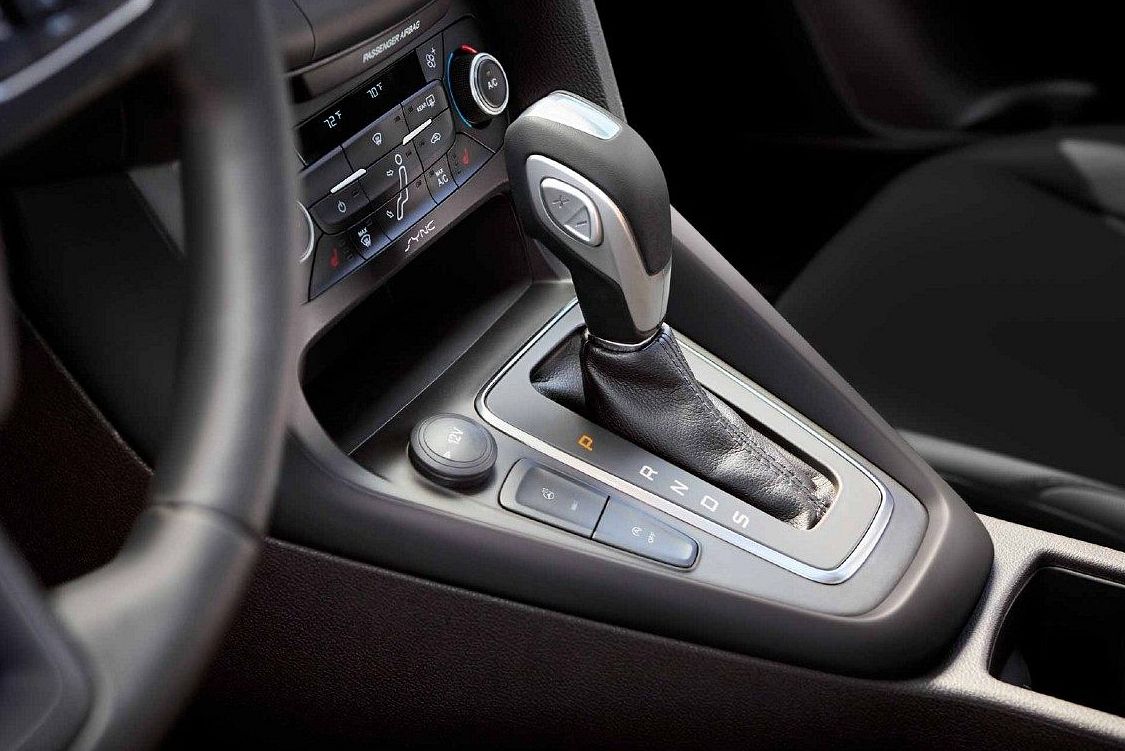
Related
How To Check Your Transmission Fluid: 4 Easy Steps
Or a few more complicated steps if you have a stick shift.
Air Conditioning Failure
Owners also love complaining about the air-conditioning, but there are more than enough complaints for it to be a common problem. Some owners reported the air conditioning working sporadically, while others suffered complete failure. In most cases, the condenser needed replacing, while others needed a compressor replacement.
Mileage: Around 65,000 miles.
Cost: Around $1,000.
How to spot: Simply test the AC to see if it blows icy cold. If possible, take more than one test drive to see if it works all the time.
Peeling Body Paint
A large group of third-generation Silverado owners claimed that the paint is susceptible to chipping and peeling easily, even those vehicles that don’t regularly face harsh conditions and adverse weather. Unfortunately, there is no way for a bad paint job to be resolved other than completely respraying the vehicle, which can cost thousands of dollars. Avoiding stones and chips may be a challenge depending on your driving environment, but to protect your paint as much as possible, ensure that your car is parked under a shaded cover or a garage. If you don’t have these kinds of facilities, consider investing in a weather-resistant car cover.
Mileage: N/A
Cost: $1,200 to $3,000 depending on how severe the chipping is.
Less Common Problems
There are no serious Chevrolet Silverado 1500 4.3 V6 or 5.3 V8 problems beyond the recalls. A few owners complained about excessive oil burning and serpentine belts wearing out early, but when you compare the number of models sold against the complaints, these count as less common problems. The only other problem that popped up is a TPMS problem, otherwise known as a tire-pressure monitoring system. 4×4 models may also struggle with a poor transfer case position sensor that may fail. This would bring up a message saying that the system needs a service, but the sensor will just need to be replaced. It’s also possible that the speedometer and other displays on the instrument panel may work erratically. If this is the case, you’ll need to repair or replace the unit. Low-speed brake failure may also be a concern for some Silverado models. It is understood that this is due to a brake vacuum pump.
Which One To Avoid
Since most of the automatic transmission problems are related to the six-speed gearbox, we’d avoid that and find a model with the newer eight-speed transmission. The V6 is probably going to be inadequate if you plan on hauling and towing big loads, while the 6.2-liter V8 is probably overkill for all but the most strenuous tasks – and it will also be more expensive.
Which One To Buy
With the six-speed transmission ruled out, that leaves the facelifted LTZ, High Country, or Z71. The 5.3-liter V8 is fine, but the 6.2 V8 is obviously a lot more entertaining. The former engine is more readily available, but it’s worth looking around for the larger one. The LTZ and High Country trims are way more luxurious than the rest of the range. If you’re looking for a work truck, we’d also stick with the facelifted model. The safety and comfort features included as standard from the facelift onwards are well worth the extra cost.
3rd-Gen Chevrolet Silverado 1500 Verdict
The 3rd-gen Silverado is one of the most sought-after used vehicles there is, and it reflects in the pricing. Prices haven’t dropped that much from new, but you will still save a decent amount. The only real mechanical problem you need to avoid is the gearbox, and that’s simple enough. It’s easy to see why the Silverado is one of America’s favorite trucks, as it ticks all the right boxes.

